Calosoma (Callisthenes) panderi (Fischer von Waldheim, 1820)
C. panderi, C. kushakevitchi and C. elegans are a similar enough group of species. All of them have raised border of pronotum, and have rather short and wide elytra with a broad margin.
C. panderi includes a number of populations that have the lateral margin of the elytra granulose, as in C. elegans, and that are further characterized by the head of normal size, by the noticeably short and convex elytra, raised on the middle in correspondence with the suture, by the elytral sculpture of triploid type with well distinct intervals, interrupted by transverse wrinkles that can form tegulae.
C. panderi is present in the north-western Kazakhstan and, perhaps, in the immediately bordering regions of Russia and with some slight different population it is also found in southern Kazakhstan and penetrates in Kyrgyzstan. The northern and southern populations are separated by the vast areas of the Kazakh Upland, but, despite the geographical separation, the morphological differentiation is scarce and we therefore whould prefer the interpretation of Jeannel (1940: 189), that collected all the populations inside the single species C. panderi.
According to this interpretation the typical form (panderi) would be the one found in the north-west Kazakhstan. Further distinctions inside the various populations found in the southern Kazakhstan are based on difficult and often inconstant characters, though some of these populations have even been considered distinct species (Obydov, 2002). Anyhow, taking into account the previously given doubts about the significance of the characters that the literature offers to differentiate these supposed species, one can at most distinguish, on the basis of slight differences in body shape and elytral sculpture, the southeastern population (karelini) from the one of south-west Kazakhstan and north Kyrgyzstan (pavlovskii).
Calosoma (Callisthenes) panderi panderi (Fischer von Waldheim, 1820)
Callisthenes Panderi Fischer von Waldheim, 1820: 85 (described from: sabulis desertorum Kirgisorum ad Orenburg meridionalium); unspecified number of specimens of both sexes, repository not stated
Calosoma panderi Dejean,, 1826: 211
Calosoma (Callisthenes) panderi Breuning, 1928: 61
Callisthenes panderi Lapouge, 1932: 375
Callisthenes panderi Jeannel, 1940: 189
Calosoma (Callisthenes) cyaneosternum Mandl, 1954: 162 (type locality: Songarei); holotype ♂ in Naturhistorischen Museum Wien (ex coll. Kaufmann) (synonymy established by Kabak, 2022: 678)
Length 18-21 mm. The body shape of C. panderi panderi is short and stocky and its head and pronotum are strongly wrinkled. The elytra are conspicuously widen at the rear part and regularly sloping towards the apex. Their sculpture is characterized by deep striae and raised intervals, interrupted by shallow transverse wrinkles, that do not form tegula. The margin of elytra is coarsely puncturated. The color of the upper body is black purplish with shades of blue.
Calosoma cyaneosternum was described by Mandl (1954: 162) on a single specimen without precise indications of locality. Obidov (2002: 15) examined the holotype and confirmed the synonymy with C. karelini previously proposed by Kryzhanovsky (1962) based on the original description. Finally Kabak (2022: 678) took up the question in detail and on this occasion attributed the specimen to C.panderi.
The presence of the typical populations is documented with certainty only in northwestern Kazakhstan.
Although in fact C. panderi panderi has been generically indicated also from southern Russia (Orenburg), Kabak (2022: 676) doubts its actual presence in Orenburg or its surroundings (Busuluk). Thus, only a few ancient and very generic indications remain ("Tartaria", "Rus. Mer", "Sibir. Occ.") and no recent finds which confirm its presence. Furthermore, the indications from central Kazakhstan reported by Breuning (1928b: 63) and confirmed by Jeannel (1940:189), “Akmolinsk (=Astana): Kyrgyz steppe near Tscharkain”, are also deemed incorrect by Obidov (2002: 139) who considers them presumably referring to specimens of C. panderi karelini
Examined specimens and literature’s data
Kazakhstan. Akmola: Akmolinsk (= Astana) (Breuning, 1928b: 63); Aktobe: Baiganin distr: Zharly (SB); Temir distr: Temir (Obydov, 2002: 14), Shubarkuduk vill. (SB, TL); Mūǧalžar distr: Embi vill. (Kabak, 2022: 677); Shalkarskiy distr: Karabulak (www.inaturalist.org); Atyrau: Inder distr: Inder lake (Breuning, 1928b: 61); West Kazakhstan: Oral (=Uralsk. Jeannel, 1940: 189), , Zelenov distr: Petrovo (Kabak, 2022: 676).
Russia. Orenburg: (Breuning, 1928b: 61), Buzuluk (Obydov, 2002: 14)
Notes: Brachypterous. It lives in grasslands of low and medium altitudes. Adults were collected. in April-May.
The species has been named after Heinrich Christian Pander (1794-1865), a famous Russian naturalist and biologist of Germanic origin, which also took part in some scientific expedition in Central Asia.
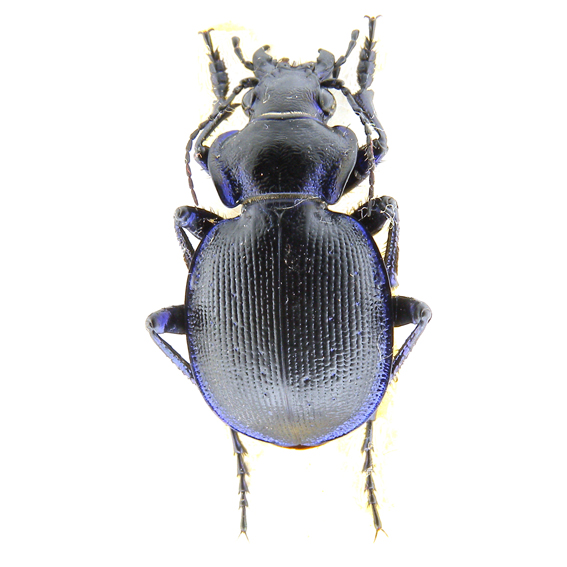 (Fischer von Waldheim, 1820) Kazakhstan: Aktiube reg., Zharyi, 10.5.97, Smirnov lgt |
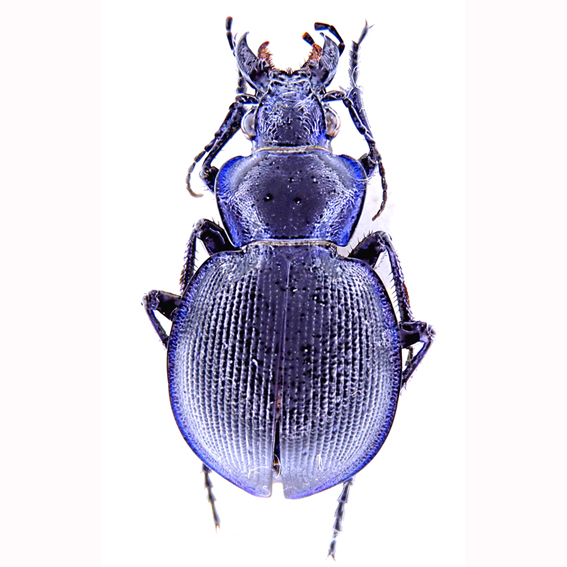 (Fischer von Waldheim, 1820) Kazakhstan: Aktiube reg., Zharyi, 10.5.97, Smirnov lgt |
Calosoma (Callisthenes) panderi karelini (Fischer von Waldheim, 1830);
Callisthenes karelini Fischer von Waldheim, 1830: 186 (place of capture, number of specimens, repository not stated)
Callisthenes karelini Fischer von Waldheim, 1846: 487 (described from: Fluvium Lepsa in Songoria rossica); unspecified number of specimens, repository not stated
Calosoma (Callisthenes) panderi var. karelini Breuning, 1928: 61
Callisthenes karelini Lapouge, 1932: 375
Callisthenes panderi karelini Jeannel, 1940: 189
Calosoma (Callisthenes) breuningi Mandl, 1954: 163 (type locality: Sergiopol, Semipalatinsk); holotype ♂ in Naturhistorischen Museum Wien
Callisthenes declivis Obydov, 1997: 168 (partim)
Callisthenes karelini vladimiri Obydov, 1998: 21 (type locality: Taldy-Kurgan, Arkharly pass); holotype ♂ in coll. Obydov
Callisthenes karelini breuningi Obydov, 2002: 17
Calosoma (Callisthenes) breuningi Kabak, 2022: 679
Calosoma (Callisthenes) breuningi iliense Kabak, 2022: 684 (type locality: right bank of Ili River, E of Tamgaly-Tas,); holotype ♂ in Zoological Institute,of the Russian Academy of Sciences, St. Petersburg, and paratypes in various collections
Length 18-22 mm. It is important to first consider that Fischer von Waldheim (1830: 186), before his detailed 1846 description (p. 487), briefly mentioned Callisthenes karelini from Karelin's collections, noting its smaller size compared to C. panderi but providing no other distinguishing characteristics.
While most authors, adhering to Article 12 of the International Code of Zoological Nomenclature, consider this a valid description, Kabak (2022: 682), after analyzing Karelin's collecting localities from that period, suggests Fischer von Waldheim's mention actually refers to a C. panderi specimen. Consequently, Kabak argues that the name karelini , later used in the 1846 description, becomes a synonym of panderi , and proposes replacing it with breuningi as the first available name for the taxon.
These conclusions seem premature. Interpreting such a brief mention is inherently difficult, especially since Fischer von Waldheim, in the preface to the 1846 description, appears to have linked it, albeit indirectly, to his previous mention of the species: “Mihi tandem sextam speciem addere, cura Cl. Karelini, prospere successit ” (p. 485).
Therefore, we prefer maintain the name C. panderi karelini to designate the southeastern populations, which share the short, stocky build of C. panderi panderi but have more arched and steeply sloping elytra, particularly apically. They differ from the southwestern populations (C. panderi pavloskii) by their more pronounced elytral sculpture, with deeply incised intervals and a slightly elevated sutural border. The dorsal color is a dark bronze, sometimes with coppery hues, or even a dark, non-metallic coloration.
C. panderi karelini exhibits limited variability, though several taxa have been erected based on minor morphological features. In the northern part of the range (Araguz), Obidov recognized Callisthenes karelini breuningi Mandl, 1954, as a distinct subspecies, characterized by a labrum wider than the clypeus and stronger elytral sculpture with indistinct foveae on the primary intervals. From Taldykorgan, Obidov (1998: 21) also described Callisthenes karelini vladimiri, distinguished primarily by a more coarsely punctate pronotum. However, we (Bruschi, 2013: 252), and subsequently Kabak (2022: 681), consider these characteristics minor and inconsistent, thus not warranting subspecific distinction.
Regarding Callisthenes declivis , which Obidov (1997: 168) placed in the panderi-karelini species group and associated with the Ili River population, Kabak (2016: 798) synonymized it with C. elegans . Later, he (Kabak, 2022: 684) proposed iliense at the subspecies level for the Ili River population of the panderi karelini complex, though this differentiation relies on minor, inconsistent traits, partly coinciding with those indicated for declive sensu Obidov (2002: 18): smoother elytral sculpture on the disc near the suture and a predominantly dark, non-metallic dorsal coloration. Even in this case we do not consider this distinction justified, due to the inconsistency of the characters and in any case due to the mixing of the environments in which the individuals thus characterised live.
In conclusion C. panderi karelini, as we define it, represents the eastern population of the group, inhabiting the fluvial valleys berween Balkhash lake and the western slopes of the Alatau range.
Examined specimens and literature’s data
Kazakhstan. Abai: Ayagoz (sub karelini breuningi Obydov, 2002: 17), Arkharly (Kabak, 2022: 684 sub breuningi iliense); Almaty: E of Tamgaly-Tas (Kabak, 2022: 684 sub breuningi iliense); Jambil: Kurday (Korday) pass (SB); Jetisu: Matay (SB), Sagabuyen (SB), 23 km NW of Kyzylkain (Kabak, 2022: 681), Panfilov distr.(SB); Kugaly (Kabak, 2022: 683), Lepsy (Lepsinsk) (Obydov, 2002: 14, considered topotypes), Koktuma (SB), Usharal (Uch-Aral) (Obydov, 2002: 16); Sarkand (Kabak, 2022: 683), Arasan (Kabak, 2022: 681), Balpyk Bi (Kabak, 2022: 684 sub breuningi iliense). Taldykorgan (sub karelini vladimiri Obydov, 2002: 16; Kabak, 2022: 684 sub breuningi iliense; TL), Qapal (Kopal) (Kabak, 2022: 681), Kyzylagash (Kabak, 2022: 681)
Notes: Brachypterous. It lives in grasslands at medium altitude, around 400m up to 1300m. Adults were collected. in April - May.
This taxon was named after Grigorij Silytch Karelin (1801-1872), a Russian naturalist and explorer known for his extensive work in Siberia and in the Caspian Sea region.
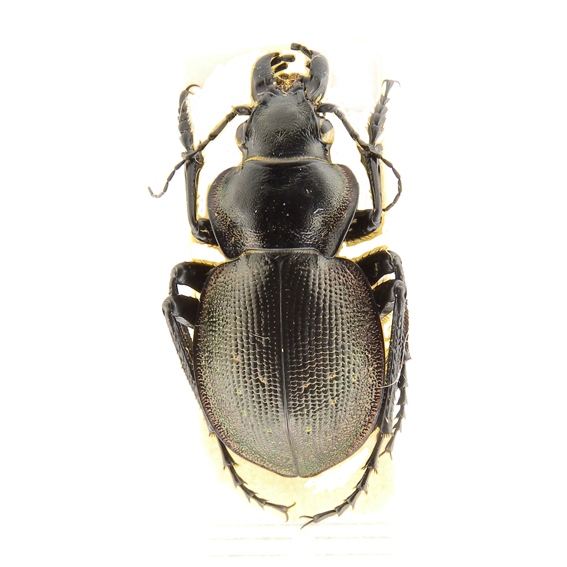 (Fischer von Waldheim, 1830) Kazakhstan: Panfilov distr., 1.VI.94 |
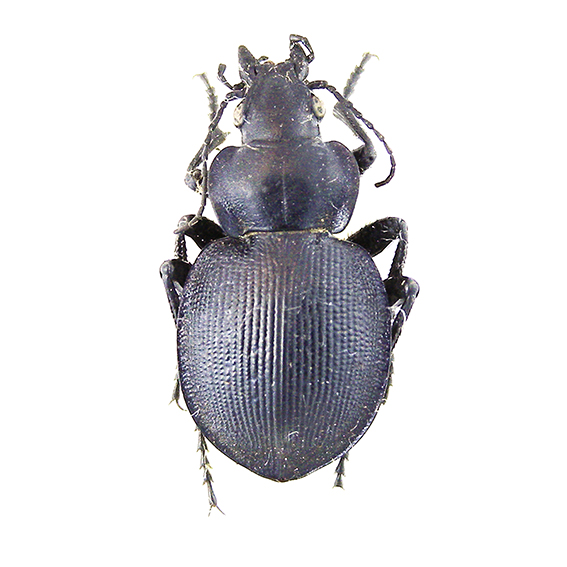 (Fischer von Waldheim, 1830) Kazakhstan: Alakol lake, Koktuma, 21.IV.97, Toropov leg. |
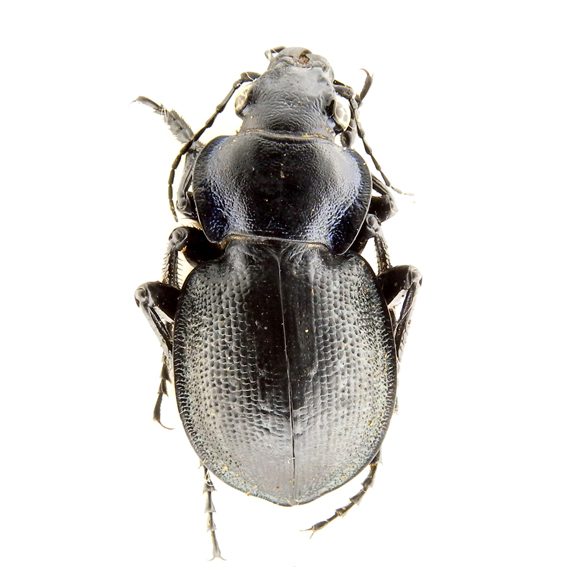 (Fischer von Waldheim, 1830) S.E. Kazakhstan, Sary-Ozek, 25.IV.1998, Irtlach leg. |
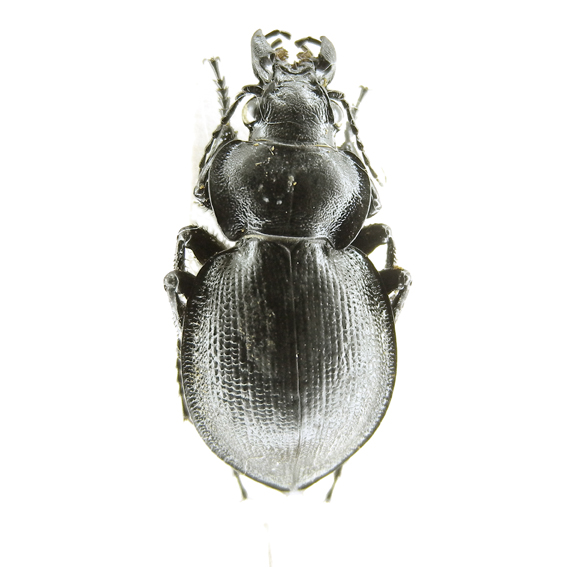 (Fischer von Waldheim, 1830) S.E. Kazakhstan, Sary-Ozek, 25.IV.1998, Irtlach leg. |
Calosoma (Callisthenes) panderi pavlovskii (Kryzhanovskij, 1955)
Callisthenes pavlovskii Kryzhanovskij, 1955: 309 (type locality: Talas); holotype ♂ in Zoological Museum of the Zoological Institute of the Russian Academy of Sciences, Saint Petersburg (Obydov, 2002: 20)
Callisthenes pavlovskyi Kryzhanovskij & al., 1995: 58.
Length 17-23 mm. A subtly different population occurs west of the distribution range of C. panderi karelini. These differences are slight, primarily consisting of of weakly arched elytra with less pronounced sculpture (which is variable, but typically involves a tendency towards flattened intervals), a darker, non-bronzed dorsal coloration, and a slightly more elongated body shape.
Kryzhanovskij (1955: 309) described these populations from the Talas River valley as a distinct species, Callisthenes pavlovskii.
As mentioned, the distinguishing features are subtle and exhibit individual variation. However, given that this populations appears to occupy a separate and distinct geographic area, we propose maintaining the Talas River valley population, characterized by these features, as a distinct subspecies.
Examined specimens and literature’s data
Kazakhstan. Jambil: Taraz (Džambul) (Obydov, 2002: 20), Qyzylorda: Sary-Ozek (SB) (Obydov, 2002: 19, sub declivis; Kabak, 2022: 684 sub breuningi iliense); Turkistan: Muyunkum desert N. of Taraz (Obydov, 2002: 19)
Kyrgyzstan. Talas: Talas (SB), Besh-Tash river (EM, SB), Kozuchak vill. (SB), Kyzyl-Say (Obydov, 2002: 20)
Notes: Brachypterous. It lives in grasslands at medium altitude, around 700-1000m. Adults were collected. in April - May.
This taxon is named after Yevgeny Nikanorovich Pavlovsky (1884 - 1965) a Russian zoologist, entomologist, academician of the Academy of Sciences of the USSR. In this respect it should be also noted that the correct spelling should have been pavlovskyi which explains because it has sometime been cited as such by some entomologists including the author himself in a later publication (Kryzhanovskij & al., 1995: 58).
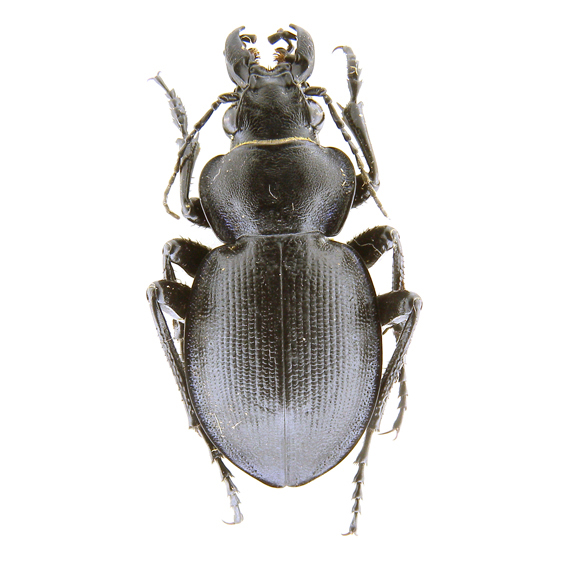 (Kryzhanovskij, 1955) Kirghizstan: Talas mt. rng., Kash-Tash river 1.000 m., 15.V.2003 |
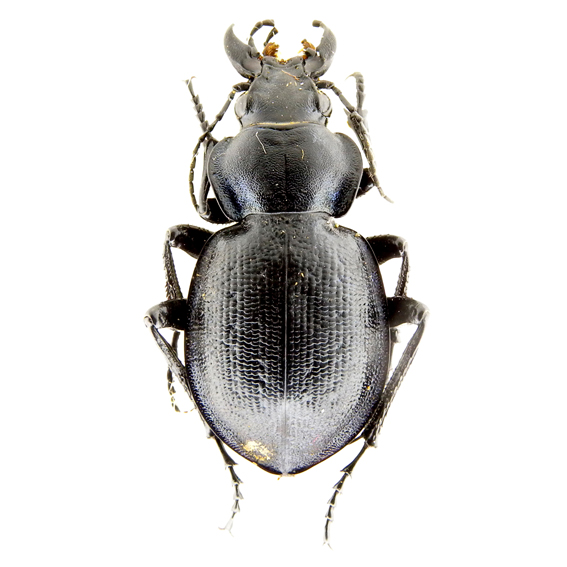 (Kryzhanovskij, 1955) Kirghizstan: Talas mt. rng., Kash-Tash river 1.000 m., 15.V.2003 |